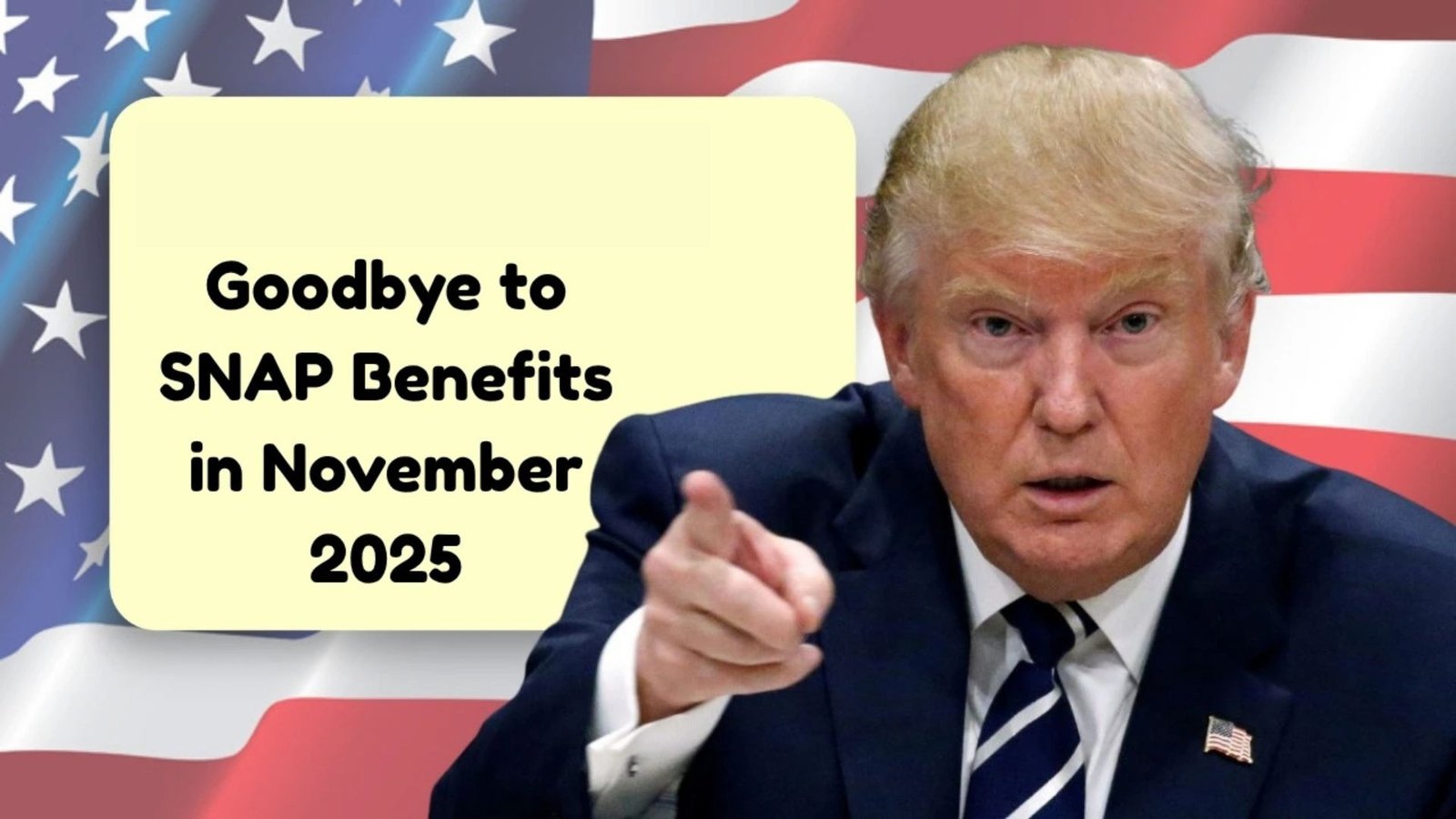In a shocking turn of events, the ongoing U.S. government shutdown is about to hit families where it hurts most: their dinner tables. As of October 28, 2025, the federal funding freeze that started on October 1 has drained reserves, putting SNAP benefits for November in serious jeopardy. We’re talking about SNAP benefits shutdown affecting up to 42 million people – that’s one in every eight Americans who could lose their monthly food help just as holiday shopping ramps up.
If Congress doesn’t act fast, experts warn this could spark the biggest hunger wave since the Great Depression. But what does this mean for you? Let’s break it down in plain English, explore the risks, and look at ways to fight back.
This crisis isn’t just numbers on a page; it’s real families skipping meals, kids going to school hungry, and seniors choosing between medicine and groceries. With Thanksgiving looming, the timing couldn’t be worse. Stick around as we unpack the SNAP benefits shutdown November 2025, why it’s happening, and how it stacks up against past shutdowns.
What Is SNAP and Why Do 42 Million People Depend on It?
SNAP, short for Supplemental Nutrition Assistance Program (once called food stamps), is like a debit card for healthy food. It gives low-income families money each month to buy groceries at stores. No cash handouts – just help to put meals on the table.
Think of it this way: SNAP isn’t welfare in the old sense. It’s a bridge for working folks hit by tough times, like job loss or high bills. Right now, over 40 million Americans use it, including:
- Kids (nearly half of recipients are children under 18).
- Seniors and people with disabilities (who make up about 20% of users).
- Working adults (over 60% of able-bodied adults on SNAP have jobs).
On average, a family gets around $187 per person monthly – enough for basics like milk, bread, and veggies, but not luxuries. Without it, food prices (up 25% since 2020) could force tough choices.
| Key SNAP Facts | Details |
|---|---|
| Total Users | 42 million (1 in 8 Americans) |
| Average Monthly Benefit per Person | $187 |
| Who Qualifies? | Households earning under $2,500/month (varies by family size) |
| How It Works | Loaded on EBT cards; used like cash at grocery stores |
| Economic Boost | Every $1 in SNAP generates $1.50–$1.80 in local spending |
This table shows why SNAP isn’t just aid – it’s an economic lifeline, pumping billions into communities.
Government Shutdown 2025: How Did We Get Here?
The government shutdown kicked off October 1, 2025, when Congress couldn’t agree on next year’s budget. Republicans pushed for spending cuts tied to President Trump’s “One Big Beautiful Bill,” while Democrats demanded protections for social programs. No deal? Lights out on non-essential federal operations.
For SNAP, run by the U.S. Department of Agriculture (USDA), this means trouble. The program needs fresh funds monthly to load EBT cards. October’s payments went through because paperwork was done early. But November? USDA says the “well has run dry.” They’ve told states to pause sending beneficiary lists to vendors, freezing the whole process.
Agriculture Secretary Brooke Rollins warned: “We just can’t do it without the government being open.” Contingency funds – about $6 billion left from prior years – cover some admin costs but fall short of the $8 billion needed for full November payouts. Past shutdowns (like 2018-2019) saw early releases to avoid this mess, but this time, officials call it a “policy choice” not to dip deeper.
Blame game alert: Republicans finger Democrats for blocking short-term funding bills. Democrats counter that the administration has tools to keep SNAP flowing and accuse the shutdown of being a Trump tactic to force cuts. Either way, families pay the price.
SNAP Benefits Shutdown November 2025: Who’s Hit Hardest?
If the SNAP benefits shutdown November 2025 happens, 42 million could wake up November 1 with empty EBT cards. States are scrambling – at least 25 (half the country) plan to halt payments outright. Here’s a snapshot:
| States at High Risk for SNAP Halt | Estimated Impact | State Response |
|---|---|---|
| California | 5 million people | Gov. Newsom seeking emergency state funds; food banks on alert |
| New York | 3 million people | Gov. Hochul warns of “heartless” cuts; urging federal action |
| Texas | 3.5 million people | Delaying new enrollments; partial payments possible |
| Florida | 2.8 million people | Full stop unless shutdown ends by Oct. 31 |
| Pennsylvania | 1.8 million people | Direct blame on Congress; ramping up charity drives |
These states alone represent over 16 million at risk. Rural areas and cities like Philadelphia or Los Angeles could see food pantries overwhelmed. Imagine: A single mom in Texas, juggling two jobs, suddenly can’t afford her kids’ school lunches. Or a Michigan senior on fixed income, forced to skip veggies to cover heat bills.
The ripple? Food insecurity spikes 30-50% in affected homes, per experts. Schools report more hungry kids; hospitals see nutrition-related health dips. And with inflation biting, private charity can’t fill a $8 billion gap. As one food bank director in Alaska put it: “We’re buying extra cans, but this is a tidal wave.”
Real Stories: Families Bracing for the Worst
Meet Sarah, a 35-year-old nurse’s aide in Ohio (not her real name). She relies on SNAP for her three kids. “If November’s gone, Thanksgiving’s canned beans from the church pantry – if we’re lucky,” she shares. “I work 50 hours a week, but rent ate my buffer.” Stories like hers flood social media: #SNAPHunger trends with tales of skipped dinners and mounting stress.
In New Jersey, EBT users got pop-up warnings: Benefits pre-loaded might not work post-October 31. One dad posted: “My boy’s birthday is November 5. Cake or nothing?” These aren’t stats – they’re heartbreaks waiting to happen.
What Can You Do? Backup Plans Amid the Chaos
Don’t panic yet – action starts now. If you’re on SNAP:
- Check your state’s site daily: Look for updates on EBT reloads.
- Stock smart: Use October benefits for non-perishables; freeze extras.
- Seek alternatives: Hit food banks via FeedingAmerica.org (ZIP code search). Programs like WIC (for moms/kids) might still run short-term.
- Call your reps: Urge Congress to pass a clean funding bill. Tools like Resist.us make it easy.
For non-recipients: Donate to local pantries. Every $1 helps three meals. And vote – shutdowns like this highlight why budget fights matter.
Will This End? Hopes for a Fix Before It’s Too Late
As day 28 of the shutdown dawns, pressure mounts. Democrats’ letter to USDA demands using reserves; GOP eyes a November 21 reopen. But with open enrollment spiking health premiums November 1, SNAP could be the tipping point. Experts like those at the Center on Budget and Policy Priorities say: “Billions sit unused – it’s about will, not wallet.”
The SNAP benefits shutdown November 2025 isn’t inevitable, but time’s ticking. For 42 million, it’s not politics – it’s plates. Stay informed, speak up, and let’s push for full fridges this holiday. What’s your take? Share in the comments – have you felt shutdown squeezes before?




